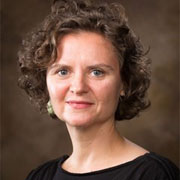Promoting Youth Engagement in Transition Planning
January 10, 2023
Transition teams are critical to building effective plans for youth who are preparing to embark on their adult lives after high school. These teams are tasked with creating and implementing plans that best align with young adults’ goals, strengths, and interests. The transition process is meant to answer questions such as:
These questions are typically answered by educational and related service professionals, those knowledgeable about future environments, and family, all of whom should be included on the transition team. While each of these groups of people hold important perspectives on these questions, it is the youth’s perspective that is most critical.
Based on my perspective, despite the critical role young adults have in their own future planning, many youth continue to not be as engaged in their transition plans as they need to be to ensure the plan makes sense for them and does in fact prepare them for the lives they wish to lead as adults. Autistic youth are particularly missing from the transition planning process, especially those with extensive support needs, those who use augmentative and alternative communication systems, and those who are Black, Indigenous, or from other communities of color. When invited to individualized educational program (IEP) meetings, which is where transition planning typically occurs, youth with disabilities remain in passive roles.
Kara Hirano and colleagues conducted a metanalysis of qualitative studies to explore the lived experiences of parents and youth related to engagement in transition. They found constellations of barriers to active engagement across various systems, including barriers in school, in adult services, and with family members. At the professional level (adult and school services), these barriers were perceived by families as:
During a recent review with research colleagues on the topic, we found similar barriers to youth engagement in the ways in which professional biases minimize active engagement. Given the lack of input in research from autistic youth from communities of color, the impact of such bias, racism, and ableism in barriers to engagement is likely even greater than we understand.
What we know is that our current systems for engaging youth and families are not working. Our impact is not matching our intent. We know that families and youth are the greatest sources of information and ultimately the drivers for success given the tools and resources needed. We know that high expectations of family and active engagement are predictive of positive post-school outcomes in continued education/training, work, and engagement in community. Still, families and youth feel disempowered. They feel that professionals are not sharing necessary information or connecting youth and families to needed support resources.
Autistic students who are multiply marginalized, in that they are Black, Indigenous, or from other communities of color, require professionals to reconsider youth engagement by focusing on how we can reduce barriers getting in the way of engagement. The questions can guide professionals in actively attending to these barriers.
Importantly, while reflecting on our systems, processes, and actions is invaluable, we must act to truly shape how youth engage in transition planning. Autistic youth, especially those who are multiply marginalized, must be more actively engaged in transition planning. While building young people’s skills in self-advocacy, self-determination, and other transition-related skills, we professionals must also build our skills to learn how to be more reflective and flexible, and how to actively dismantle barriers to youth engagement.
 Dr. Suzanne Kucharczyk is an associate professor of special education and coordinator of inclusive education and clinical programs at the University of Arkansas. Her teaching and research focus on supporting teachers and parents in their roles in effective transition process implementation for youth, especially those with autism and extensive support needs. Currently, Dr. Kucharczyk is principal investigator of the Teaming for Transition and Leaders for Transition, U.S. Department of Education funded projects at the University of Arkansas in partnership with national, state, and local transition leaders, families, and youth.
Dr. Suzanne Kucharczyk is an associate professor of special education and coordinator of inclusive education and clinical programs at the University of Arkansas. Her teaching and research focus on supporting teachers and parents in their roles in effective transition process implementation for youth, especially those with autism and extensive support needs. Currently, Dr. Kucharczyk is principal investigator of the Teaming for Transition and Leaders for Transition, U.S. Department of Education funded projects at the University of Arkansas in partnership with national, state, and local transition leaders, families, and youth.